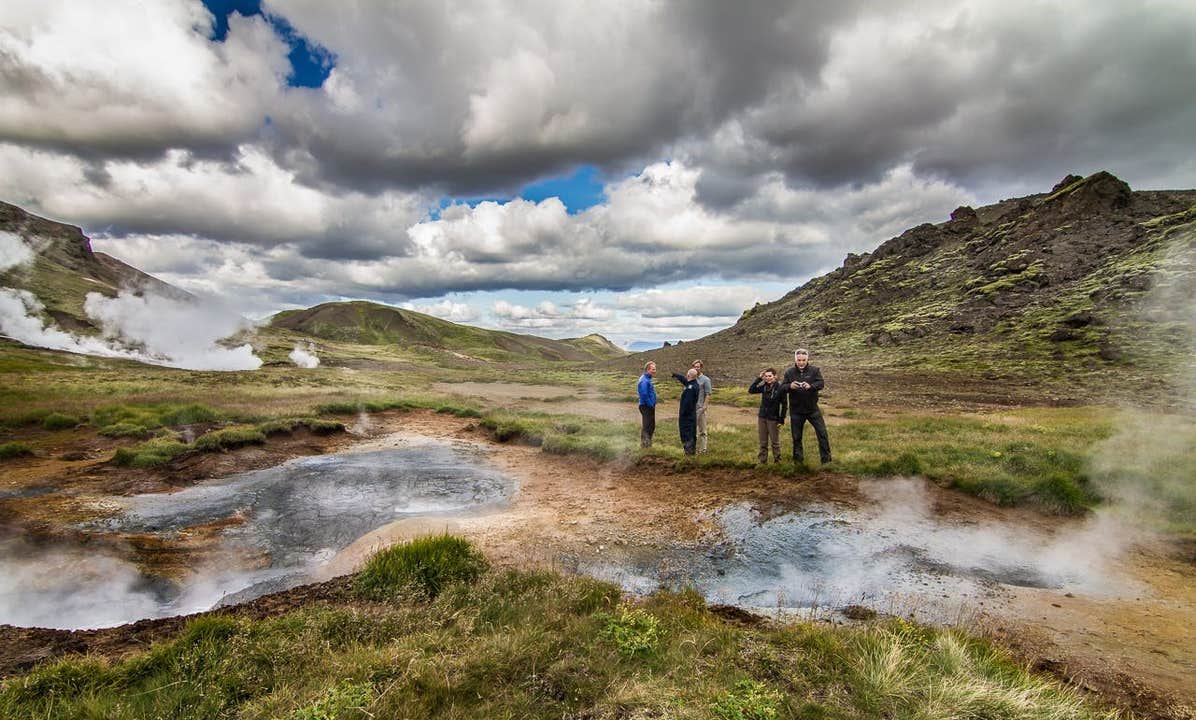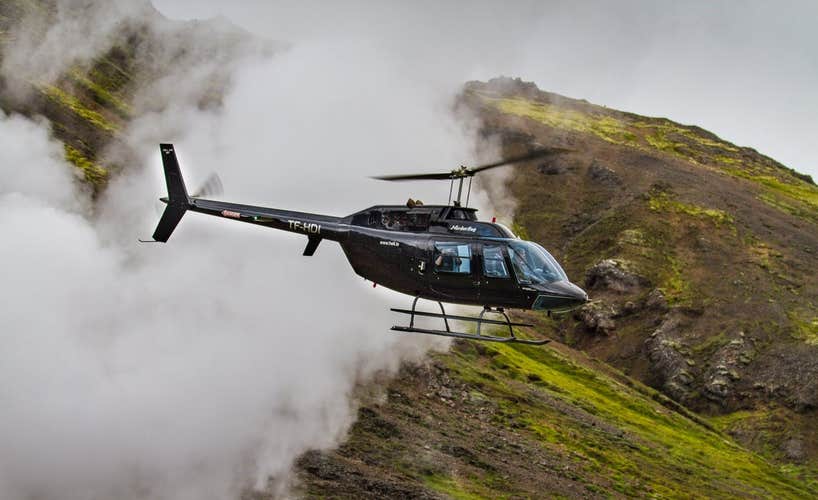Description
Summary
Description
Witness Iceland’s incredible waterfalls, mountains and valleys from the sky with this exciting helicopter excursion. This tour is perfect for those who crave adventure but don’t want to miss a moment of sightseeing.
You will begin at Reykjavík's Domestic Airport, where, after a briefing on your route from your pilot, you will take to the skies. The capital of Iceland is spectacular from above; you will be able to enjoy its famous sites such as Hallgrímskirkja church, its incredible surrounding nature, and its beautiful architecture.
Following this, you will soar north, with stunning countryside unfolding beneath you. Your first destination is Glymur waterfall, the second-tallest waterfall in the country, nestled in the verdant, mountainous fjord of Hvalfjörður.
At 198 metres tall, tumbling in a narrow cascade, Glymur is a beautiful feature. From your vantage point in the sky, you will truly be able to appreciate its scale, as well as its wealth of surrounding flora.
After circling it so that you can photograph it from all angles, you will head inland, towards Þingvellir National Park. En route, you will pass over seething geothermal springs, steaming power plants, and stark lava fields, all whispering of the geological activity at work in Iceland.
Nowhere, however, shall it be more obvious than at Þingvellir. Here, you can clearly see the rift valley between the North American and Eurasian tectonic plates, marked at its edges by the walls of the continents.
Within the National Park is a wealth of spectacular nature; the largest natural lake in the country, Þingvallavatn, stretches to its south; the waterfall Öxarárfoss tumbles off the North American plate; and birch, springs and lava fields all reside within its boundaries.
You will make a landing on your journey, somewhere far from the crowds, where you will attain spectacular views of the surrounding areas, and have a chance to take some incredible photos.
You will return to Reykjavík’s Domestic Airport after an hour and a half or so. Your memory cards will no doubt be packed with photographs of this awe-inspiring adventure.
Enjoy Iceland’s cityscapes and natural features from above, with this excellent helicopter tour. Check availability by choosing a date.













